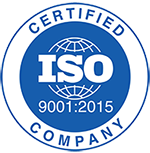What is a Motor Drive?
A motor drive is popularly known as a Variable Frequency Drive (VFD) or a Variable Speed Drive (VSD). Motor drive is a general term referring to the sub-system that controls speed of motor to be operated at multiple operating speeds as needed by the application. For a given application, ‘Drive’ is a portion of equipment that adjusts motor speed to change the flow of the pump or speed of a fan or controls the movement of an escalator.
An alternating current motor like AC Induction Motor (ACIM) can be operated at a fixed speed which is determined by the number of stator pole pairs in the motor and the frequency of the alternating current that is supplied. The number of stator pole pairs is defined by the construction of the motor, and to change the speed requires modification of the motor construction every time the speed is required to vary. Another parameter that can be varied to control the speed is the frequency of the input AC supply. The ‘Drive’ is the equipment that changes the frequency of the supply to vary the speed, and thus Variable Frequency Drive (VFD).
A direct current motor like Brush-less Direct Current (BLDC) motor can be operated at varying speeds by changing the magnitude of the current supply to the motor. In cases like BLDC motor, the ‘Drive’ that controls the motor speed is also the system that does electronic commutation of the motor. The advancements in power electronics have increased the feasibility of the DC motor for many applications and it has begun replacing AC motors. In addition to the speed control, the use of the ‘Drive’ system may save energy and widen the application scope of the motor.
There are 3 categories of electric drives, DC motor drives, Eddy current drives, and AC motor drives. These categories are usually subdivided into many variations. In recent times with EVs, regenerative AC drives are sought after for the feature of regenerative braking.


